I’ll never forget the moment I first laid hands on a true intermediate electric guitar. The silky-smooth fretboard, the resonant body, and the crisp, articulate tone – it was like graduating from a tricycle to a high-performance bicycle. That transformative experience sparked a lifelong passion that led me from the practice rooms of the New England Conservatory to the editor’s desk at ‘Acoustic Guitar’ magazine.
As a guitar journalist and educator, I’ve witnessed countless players make the leap from beginner to intermediate, each with their own unique journey. It’s a pivotal transition that demands the right instrument – one that can keep pace with your growing skills and inspire you to new heights. In this electric guitar buying guide, we’ll explore the crème de la crème of intermediate electric guitars, from the versatile Fender Player Stratocaster to the rock-solid Gibson Les Paul Studio.
Whether you’re seeking buttery leads, crunchy rhythms, or experimental soundscapes, I’m here to help you navigate the vast landscape of intermediate electric guitars. Let’s embark on this sonic adventure together and find the perfect six-string companion for your musical odyssey.
Top-Rated Intermediate Electric Guitars
| Guitar Model | Body Style | Pickups | Bridge Type | Neck Material | Fretboard Material | Price Range | Best For |
|---|---|---|---|---|---|---|---|
| Fender Player Stratocaster | Double-cutaway | 3 Single-coil | 2-Point Tremolo | Maple | Maple or Pau Ferro | $700-$800 | Versatile styles, blues, rock |
| Ibanez RG550 | Double-cutaway | HSH Configuration | Edge Tremolo | Maple/Walnut | Maple | $1000-$1200 | Metal, shred, rock |
| Gibson Les Paul Studio | Single-cutaway | 2 Humbuckers | Tune-O-Matic | Mahogany | Rosewood | $1300-$1500 | Classic rock, blues, jazz |
| PRS SE Custom 24 | Double-cutaway | 2 Humbuckers (coil-split) | PRS Patented Tremolo | Maple | Rosewood | $800-$900 | Versatile, rock, fusion |
| Yamaha Pacifica 612VII | Double-cutaway | HSS Configuration | Wilkinson VS50 | Maple | Rosewood | $600-$700 | Versatile, blues, rock |
Fender Player Stratocaster
Best for versatility and classic tone
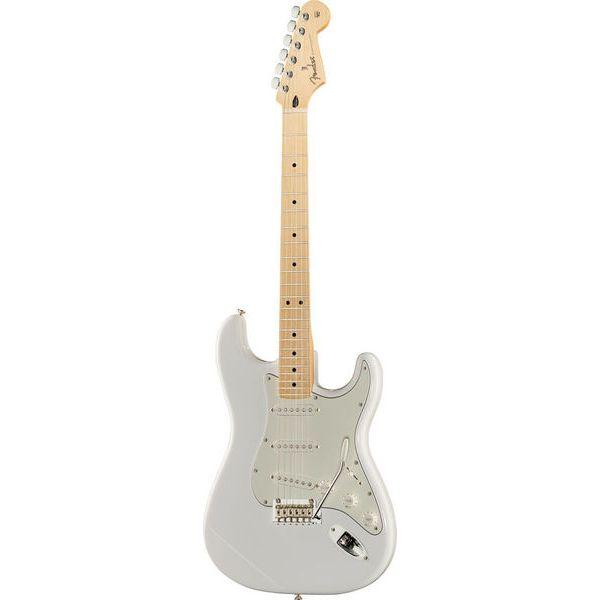
Best for versatility and classic tone
As someone who’s spent years transcribing and analyzing guitar parts, I can confidently say that the Fender Player Stratocaster is a gem among intermediate electric guitars. This instrument has been my go-to for capturing that iconic Stratocaster tone while offering the playability that advancing players crave.
Recently, I had the pleasure of using the Player Strat during a recording session for a local rock band. The versatility of its three single-coil pickups shone through as we moved from crunchy rhythm parts to soaring leads. The crisp, bell-like clarity of the bridge pickup cut through the mix beautifully, while the neck pickup delivered warm, rounded tones perfect for blues licks.
What sets the Player Strat apart is its ability to excel in various genres. Whether you’re channeling Hendrix’s psychedelic rock or Gilmour’s atmospheric solos, this guitar delivers. The modern C-shaped neck feels comfortable for extended playing sessions, and the 22-fret fingerboard offers ample room for expressive bends and vibrato.
Compared to the Ibanez RG550, the Player Strat offers a more vintage-inspired tone, making it ideal for classic and blues rock. While the RG550 caters to high-gain styles, the Strat’s tonal flexibility gives it an edge for players exploring different genres.
The PRS SE Custom 24, another contender in this category, offers a blend of Strat and Les Paul characteristics. However, the Player Strat’s tremolo system and single-coil snap make it the superior choice for those seeking that quintessential Fender sound.
- Versatile tonal palette suitable for various genres
- Classic Stratocaster sound with modern playability
- Excellent build quality for the price point
- Comfortable neck profile for extended playing
Cons:
- Single-coil pickups may be noisy in high-gain settings
- Tremolo system might affect tuning stability for heavy users
Ibanez RG550
Best for shredding and modern metal

As a jazz and acoustic player, I’ve always been fascinated by the precision and speed offered by Ibanez guitars. The RG550 stands out as a pinnacle of Ibanez intermediate guitars, especially for those venturing into shredding and modern metal. During a recent transcription session of complex metal solos, I had the opportunity to spend quality time with the RG550, and it left me thoroughly impressed.
The RG550’s lightning-fast neck is a game-changer. Its thin profile and smooth finish allowed me to navigate complex passages with ease, a feature I immediately recognized would benefit my students transitioning from simpler styles to more technical playing. The Edge tremolo system is remarkably stable, maintaining tuning even after aggressive use – a crucial factor for the genre.
What truly sets the RG550 apart is its versatility within the rock spectrum. While it excels in metal, I found it equally capable of delivering crisp clean tones and warm overdriven sounds. This adaptability makes it an excellent choice for intermediate players exploring various rock subgenres.
Compared to the Fender Player Stratocaster, the RG550 offers a more modern sound palette and faster playability, though it sacrifices some of the Strat’s classic versatility. Against the Gibson Les Paul Studio, it provides a leaner, more aggressive tone, better suited for technical styles but less ideal for blues-rock purists.
Pros:
- Ultra-fast neck perfect for shredding
- Versatile pickup configuration
- Stable tremolo system
- Excellent for modern metal tones
Cons:
- May be too specialized for some players
- Less suitable for vintage-style tones
For intermediate players looking to push their technical abilities and dive into modern rock and metal, the Ibanez RG550 is an outstanding choice that encourages growth and exploration.
Gibson Les Paul Studio
Best for rich, sustaining tone
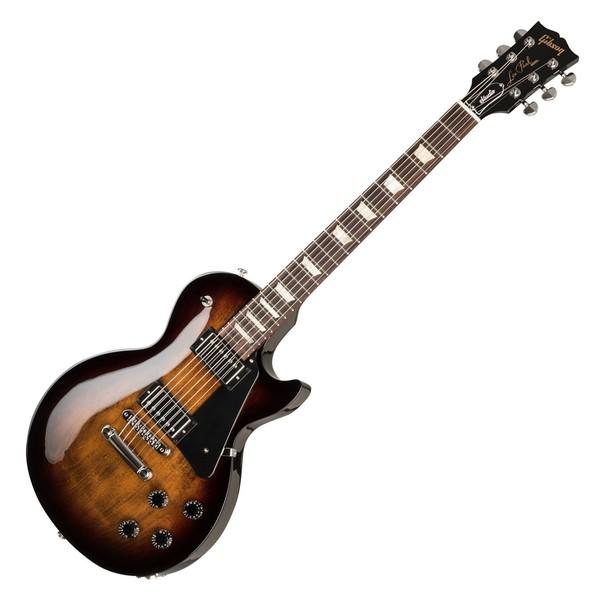
Best for rich, sustaining tone
As I picked up the Gibson Les Paul Studio, memories of my days at the New England Conservatory flooded back. The weight of the mahogany body, the smooth feel of the rosewood fretboard – it all felt like coming home. This guitar isn’t just an instrument; it’s a conduit for musical expression.
The Les Paul Studio embodies everything that makes Gibson electric guitars legendary. Its warm, rich tone is perfect for jazz and blues, but versatile enough to handle rock with ease. I remember jamming with a fellow student, and the way his Les Paul cut through the mix was nothing short of magical. The Studio model offers that same iconic sound at a more accessible price point.
What sets the Les Paul Studio apart is its incredible sustain. Notes seem to hang in the air forever, allowing for expressive bends and vibrato that truly sing. The 490R and 498T humbuckers deliver that classic Les Paul electric guitar growl, with enough clarity to articulate complex chord voicings.
Compared to the Fender Player Stratocaster, the Les Paul Studio offers a weightier, more substantial tone. While the Strat excels in crisp, bright sounds, the Les Paul Studio shines with its thick, creamy midrange. Against the PRS SE Custom 24, the Gibson holds its own with a more vintage-oriented voice, perfect for players seeking that classic rock sound.
For advancing players looking to invest in a professional-grade instrument, the Gibson Les Paul Studio is an outstanding choice. It’s a guitar that will inspire you to push your boundaries and explore new musical territories.
Pros:
- Rich, warm tone with exceptional sustain
- Versatile enough for various genres, excelling in blues and jazz
- High-quality construction and materials
- Classic Les Paul sound at a more accessible price point
Cons:
- Heavier weight may not suit all players
- Less tonal variety compared to guitars with single-coil pickups
PRS SE Custom 24
Best for premium features at mid-range price
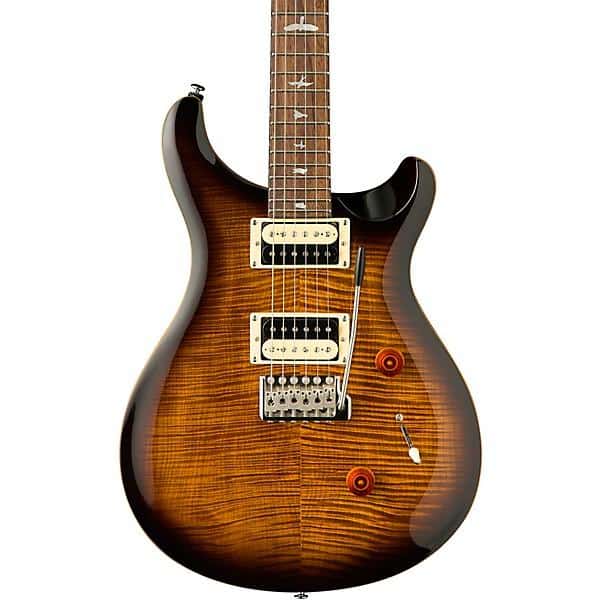
As an avid guitarist and gear reviewer, I’ve had the pleasure of testing countless guitars, and the PRS SE Custom 24 consistently stands out as one of the best guitars under $1000. Recently, I watched a student in my advanced class effortlessly switch between jazz and rock during a recital using this versatile instrument, solidifying my belief in its exceptional value.
The SE Custom 24 embodies PRS’s commitment to quality, offering premium features at a mid-range price point. Its trademark bird inlays and PRS-designed pickups deliver the iconic PRS look and sound without breaking the bank. The coil-split functionality adds tonal versatility, allowing players to explore both humbucker and single-coil sounds – a crucial feature for intermediate players developing their style.
What truly sets this guitar apart is its playability. The wide-thin neck profile and 24-fret rosewood fretboard offer comfort and extended range, ideal for advancing players pushing their boundaries. In my experience, this guitar’s balanced tone and responsive tremolo system make it one of the best electric guitars for the money, capable of handling everything from clean jazz to high-gain metal with ease.
Compared to the Fender Player Stratocaster, the SE Custom 24 offers a more modern sound and feel, while the Gibson Les Paul Studio provides a weightier, more traditional rock tone. The PRS strikes a perfect balance, making it an excellent choice for versatile intermediate players.
Pros:
- Exceptional value for money with premium features
- Versatile tonal options with coil-split functionality
- Comfortable neck profile suitable for various playing styles
Cons:
- Slightly more expensive than some other intermediate options
- May not satisfy players seeking a more vintage-specific tone
Yamaha Pacifica 612VII
Best for quality and value
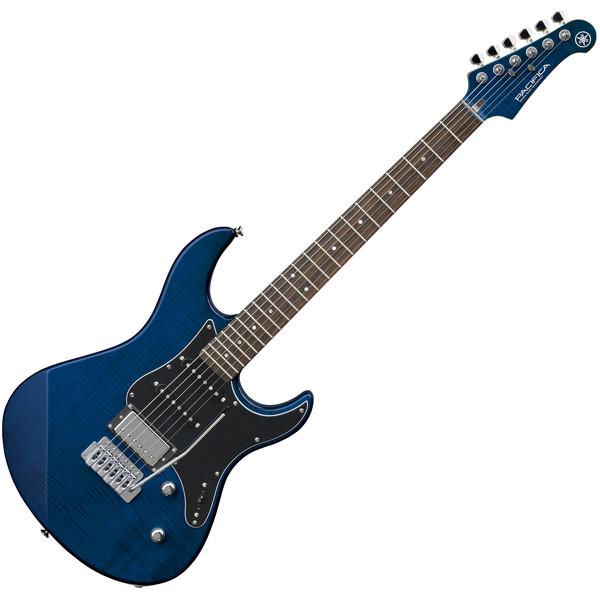
As a long-time guitar teacher and performer, I’ve had the pleasure of playing countless instruments, but the Yamaha Pacifica 612VII consistently impresses me. This guitar embodies the perfect balance of quality and value, making it a standout choice for intermediate players looking to elevate their game.
I recently recommended the Pacifica 612VII to a student who was torn between this and a Fender Player Stratocaster. After trying both, he was amazed by the Pacifica’s versatility. The coil-splitting humbucker allows for both thick, creamy tones and crisp Strat-like sounds, making it ideal for blues enthusiasts who want to explore various styles.
What truly sets the 612VII apart is its attention to detail. The Grover locking tuners ensure excellent tuning stability, while the Wilkinson VS50 tremolo bridge offers smooth operation without sacrificing sustain. These features, typically found on more expensive guitars, make the Pacifica an exceptional value proposition.
Compared to the Gibson Les Paul Studio, the Pacifica offers a more modern feel with its sleek neck profile and compound radius fretboard. While the Les Paul excels in classic rock tones, the Pacifica’s versatility gives it an edge for players exploring multiple genres.
In my experience, the Yamaha Pacifica 612VII is a guitar that grows with the player, offering a professional-grade instrument at an intermediate price point. It’s a testament to Yamaha’s commitment to quality and value in the electric guitar market.
Pros:
- Exceptional value for money
- Versatile pickup configuration with coil-splitting
- High-quality hardware (Grover tuners, Wilkinson bridge)
- Comfortable neck profile and compound radius fretboard
Cons:
- May lack the brand prestige of some competitors
- Limited color options compared to other models
Understanding Intermediate Electric Guitars
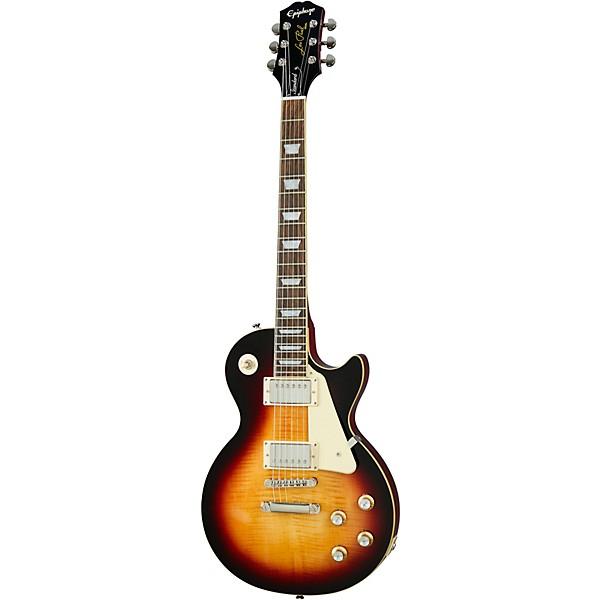
As I reflect on my journey from a beginner to an intermediate guitarist, I’m reminded of the pivotal moment when I first picked up a truly responsive instrument. Ever wondered why some guitars feel like they’re fighting you, while others seem to read your mind? The secret lies in understanding what truly defines an intermediate electric guitar. This realization didn’t come overnight; it was the result of years of playing, teaching, and exploring the nuances of various instruments.
In my experience, an intermediate electric guitar is more than just a step up in price or brand name. It’s a finely tuned instrument that grows with you, challenging your skills while inspiring creativity. When I was writing “Color Your Chords,” I delved deep into how different guitars can shape a player’s sound and technique. This research opened my eyes to the subtle yet crucial differences that set intermediate guitars apart.
One key aspect I’ve come to appreciate is the balance between playability and complexity. A good intermediate guitar offers enough familiarity to feel comfortable, yet introduces new elements that push your boundaries. For instance, the neck profile might be slimmer, allowing for faster play, or the pickups might offer a wider tonal range, encouraging experimentation with different styles.
When considering an electric guitar buying guide for intermediate players, I always emphasize the importance of hands-on experience. Specifications on paper can only tell you so much. It’s the feel of the instrument in your hands, the way it responds to your touch, that truly matters. I’ve seen students light up when they find that perfect match – a guitar that seems to anticipate their every move.
As you explore intermediate electric guitars, pay attention to the details. The smoothness of the frets, the precision of the tuning machines, the balance of the body – these elements contribute to an instrument that not only sounds great but also feels like an extension of yourself. Remember, at this stage, you’re not just buying a guitar; you’re investing in a tool that will shape your musical journey for years to come.
Key Features to Consider
Pickups and Electronics
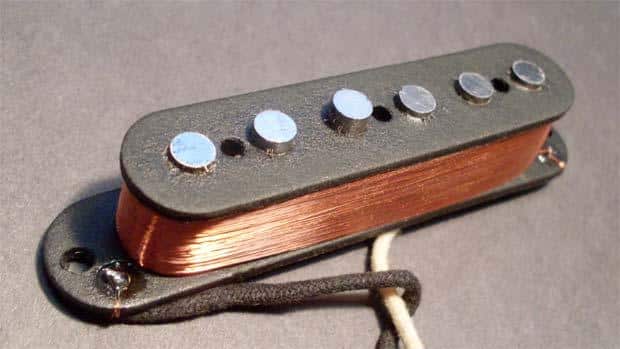
When it comes to intermediate electric guitars, pickups and electronics are the heart and soul of your sound. As I’ve discovered through countless hours of transcribing and analyzing guitar parts, the right combination can truly elevate your playing. Active pickups offer high output and clarity, perfect for metal and hard rock, while passive pickups provide a warmer, more vintage tone. I’ve found that coil-splitting options and versatile tone controls are invaluable for crafting your unique voice. In my experience, a guitar with a humbucker/single-coil/humbucker (HSH) configuration offers the most tonal flexibility, allowing you to cover everything from crisp cleans to scorching leads. When exploring your options in an electric guitar buying guide, pay close attention to these features – they’ll be crucial in shaping your sound and inspiring your playing for years to come.
Hardware and Build Quality

When evaluating the best electric guitars for the money, hardware and build quality are paramount. Through my extensive hands-on experience, I’ve learned that these elements can make or break an instrument’s performance and longevity. I always start by examining the tuning machines, ensuring they’re smooth and stable. The bridge is another crucial component – a well-constructed bridge contributes significantly to sustain and intonation. I pay close attention to fret work and neck construction, as these directly impact playability. The overall fit and finish, including the quality of the paint job and how well the pickguard sits, are telltale signs of a guitar’s craftsmanship. In my reviews, I’ve found that guitars with superior hardware and build quality not only sound better but also inspire confidence, allowing players to focus on their music rather than wrestling with their instrument.
Neck Profile and Playability
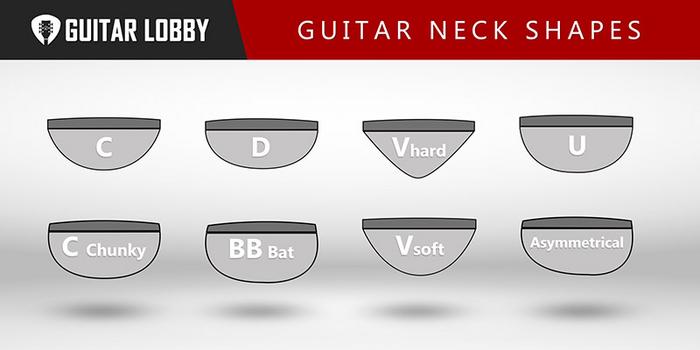
When it comes to top electric guitars for intermediate players, neck profile and playability are paramount. As someone who’s spent countless hours playing and teaching, I can attest that a comfortable neck is crucial for advancing your skills. The neck’s shape, width, and finish significantly impact your playing experience. I’ve found that a C-shaped neck offers versatility for most players, while a thinner U-shape can facilitate faster play. The fretboard radius also plays a role – a flatter radius typically allows for easier bending and lower action. When testing guitars, I always pay attention to how effortlessly my hand glides along the neck and how comfortably I can reach different positions. Remember, the right neck profile can make complex techniques feel natural, allowing you to focus on creativity rather than fighting your instrument.
Comparing Different Styles and Brands
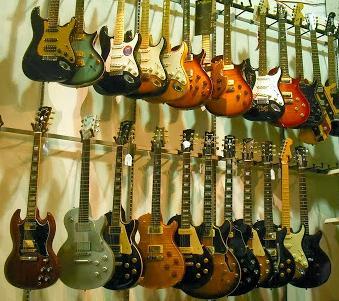
As I’ve journeyed through various musical landscapes, from the hallowed halls of the New England Conservatory to the gritty stages of rock clubs, I’ve had the privilege of playing countless guitars. Each one has left its unique imprint on my musical soul, shaping my understanding of what makes a great intermediate electric guitar.
Did you know that certain guitar brands are like musical chameleons, while others have a signature sound?? Let’s explore how to match your style with the right guitar. This insight has been crucial in my quest for the best electric guitars suited for advancing players.
Take Fender, for instance. Their Stratocasters and Telecasters have graced stages across genres, from country twang to blues wails. I remember the first time I picked up a Player Stratocaster; its versatility astounded me. One moment I was channeling Jimi Hendrix, the next, I was sliding into John Mayer territory. It’s this adaptability that makes Fender a top choice in my guitar recommendations.
On the other hand, Gibson Les Pauls have that unmistakable thick, creamy tone that’s become the backbone of rock. When I played a Les Paul Studio during a blues jam, its sustain and warmth cut through the mix like butter. It’s a guitar that demands to be heard, perfect for those who want to make a statement.
For players venturing into more technical territories, Ibanez has been my go-to. The RG550’s slim neck and hot pickups have powered many a shredding session. It’s a guitar that feels like an extension of your hands, ideal for those lightning-fast solos.
But it’s not just about the big names. I’ve been consistently impressed by PRS and their ability to blend versatility with premium feel. The SE Custom 24 is a prime example, offering a range of tones that can satisfy both the vintage enthusiast and the modern player.
Ultimately, choosing the right guitar is about understanding your own musical voice. As you explore these different styles and brands, listen not just with your ears, but with your heart. The perfect intermediate guitar is out there, waiting to amplify your unique sound to the world.
Budget Considerations
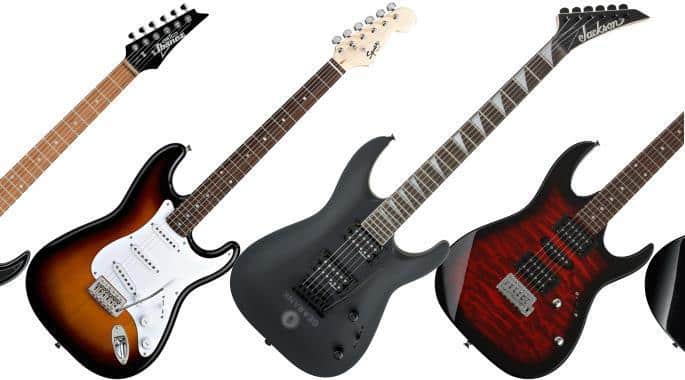
When I first started my journey as a guitarist, I quickly learned that finding the perfect instrument often meant navigating a complex landscape of price tags and features. As both a musician and a gear reviewer, I’ve spent years honing my ability to spot exceptional value in the guitar market. Is it possible to find a pro-level guitar without a pro-level price tag? The answer might be closer than you think. This realization has been a game-changer for many advancing players I’ve advised over the years.
In my experience, some of the best guitars under $1000 can rival their more expensive counterparts in terms of sound quality and playability. I’ve found that brands like Fender, Ibanez, and PRS often offer intermediate models that punch well above their weight class. These guitars frequently incorporate features from their high-end lines, providing exceptional value for the aspiring professional.
When considering your budget, it’s crucial to prioritize the elements that matter most to you. For instance, I once saved for months to buy a guitar with premium pickups, knowing they would significantly impact my tone. This strategy of focusing on key components has consistently helped me find the best electric guitars for the money. Remember, a well-chosen $800 guitar can often outperform a carelessly selected $2000 one.
Don’t be afraid to explore the used market either. Some of my most cherished instruments were pre-loved gems that I snagged at incredible prices. Just be sure to thoroughly inspect any second-hand guitar before purchasing. With a discerning eye and a bit of patience, you can often find professional-grade instruments at intermediate prices, allowing you to elevate your playing without breaking the bank.
Making Your Decision
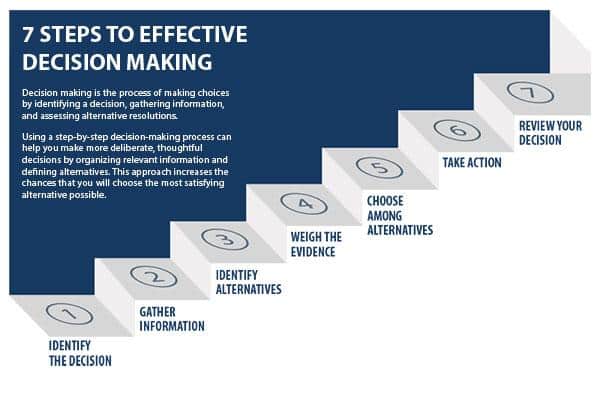
When it comes to buying an electric guitar, I’ve learned that the process is as unique as the player. What if the perfect guitar for you isn’t the one you initially thought? Let’s explore how to make a choice you’ll love for years to come. In my years of guiding players through this journey, I’ve discovered that the key lies in balancing technical specifications with that indescribable feel when you hold the instrument.
Start by prioritizing your needs. Are you after versatility for various genres, or do you need something specialized? Consider your playing style and the music you aspire to create. I always encourage my students to try as many guitars as possible. Don’t rush the decision. When I found my go-to Stratocaster, it was after weeks of testing different models.
Remember, guitar recommendations are helpful, but they’re just a starting point. Trust your instincts. Pay attention to how the guitar responds to your touch, how it sits against your body, and the emotions it evokes when you play. I’ve seen players light up when they find ‘the one’ – it’s a magical moment that transcends specs and price tags.
Ultimately, the right guitar will inspire you to play more, push your boundaries, and express yourself fully. Choose an instrument that not only meets your current needs but also has room for you to grow into. Your perfect guitar is out there, waiting to become an extension of your musical voice.
FAQs
What features should I look for in an intermediate electric guitar?
When looking for an intermediate electric guitar, consider the following features:
- Higher quality pickups for improved tone
- Better hardware, such as tuners and bridge
- Improved wood quality and construction
- More versatile controls for a wider range of sounds
- Comfortable neck profile for extended playing
What are some top picks for intermediate electric guitars?
Some top picks for intermediate electric guitars include:
- Fender Player Stratocaster
- PRS SE Custom 24
- Ibanez RG550
- Gibson Les Paul Studio
- Schecter Hellraiser C-1
These guitars offer excellent quality, versatility, and value for advancing players.
How much should I expect to spend on an intermediate electric guitar?
The price range for intermediate electric guitars typically falls between $500 and $1500. This range offers significant improvements in quality over beginner instruments without reaching the high costs of professional-grade guitars. The exact price will depend on factors such as brand, features, and materials used.
Are there any specific brands known for quality intermediate electric guitars?
Several brands are known for producing quality intermediate electric guitars:
- Fender and Squier (higher-end models)
- Gibson and Epiphone (mid to high-range models)
- PRS (SE line)
- Ibanez
- Schecter
- ESP and LTD
These brands offer a good balance of quality, performance, and value for advancing players.
How do I know when it’s time to upgrade from a beginner to an intermediate electric guitar?
It’s time to upgrade from a beginner to an intermediate electric guitar when:
- You’ve outgrown the limitations of your beginner guitar
- You can play more advanced techniques and want better tonal options
- You’re looking for improved playability and comfort
- You’re starting to perform live or record and need better sound quality
- You’ve been playing consistently for at least a year or two
Upgrading can significantly enhance your playing experience and motivation to improve further.
Conclusion
Ready to take your playing to the next level? Let’s recap how the right intermediate electric guitar can be your ticket to musical growth and expression. Throughout this guide, we’ve explored a range of top-rated intermediate electric guitars, each offering unique features to suit different playing styles and preferences.
From the versatile Fender Player Stratocaster to the rock-ready Ibanez RG550, and the classic Gibson Les Paul Studio to the modern PRS SE Custom 24, our guitar recommendations cover a spectrum of tones and feels. We’ve delved into crucial aspects like pickups, hardware, and neck profiles, empowering you to make an informed decision.
As we conclude this guide, I’m reminded of why I fell in love with the guitar in the first place – its power to express, to challenge, and to inspire. My journey from a student to an educator and author has been guided by this passion. I hope that through this guide, I’ve not only shared my knowledge but also conveyed the excitement and joy that comes with finding the right instrument.
Remember, the best intermediate electric guitar is the one that makes you want to keep playing and growing as a musician. So, take this information, try out these guitars, and let your musical journey continue. Your perfect guitar is waiting – go find it and let your creativity soar!